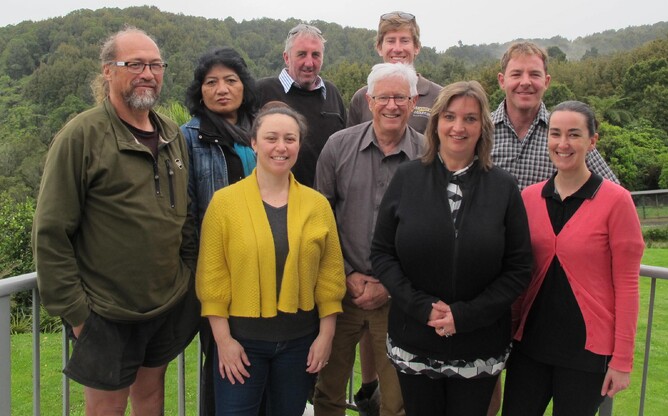Waikato’s Sanctuary Mountain Maungatautari is leading the way in sustainable tourism, with the news that it has recently achieved a Qualmark Silver Award under the new Sustainable Tourism Business criteria.
A Qualmark award provides evidence that a business has been independently validated as a quality tourism business, and is focused on sustainability.
At the same time, the predator-free reserve near Cambridge has been named as a finalist in Department of Conservation-sponsored ‘Restoring Nature’ category of the NZI Sustainable Business Network Awards for 2017.
“This is great news, as restoring nature and protecting native species is at the heart of what we do at Sanctuary Mountain Maungatautari,” says Acting General Manager Melissa Sinton.
“The Qualmark Award is another great achievement by the team. It confirms that Sanctuary Mountain Maungatautari is not only a high-quality tourism destination, but is committed to protecting the natural environment.”
Sanctuary Mountain Maungatautari’s 47km pest-proof fence is the longest in the world, protecting 3,363 hectares of ecological reserve and many of New Zealand’s endangered species.
Many endangered native birds have been relocated and released in the sanctuary, which is kept free of pests such as possums, rats, stoats and mice, which can prey on native species.
Fondly known by locals as ‘the Maunga’, Sanctuary Mountain Maungatautari is accessible to the public and expects to attract about 20,000 visitors this year. It is popular with both international and domestic visitors, including school groups.
Ms Sinton says the Qualmark Award as a real achievement, and is testament to the efforts of staff, volunteers and contractors. To qualify for the award, the organisation had to go through a rigorous licensing process including an on-site evaluation from an independent tourism business advisor.
“Achieving the Qualmark logo is a real seal of approval for all we do and the experience we deliver visitors,” says Ms Sinton. “Getting this at the same time as being named as finalists in the NZI Sustainable Business Awards is significant for us.”
The NZI Sustainable Business Network Awards, which have been running for 15 years, recognise and celebrate success in sustainability. Finalists in the ‘Restoring Nature’ category are businesses and organisations taking a leadership role in restoring New Zealand’s nature. Winners will be announced at a gala dinner event in Auckland on November 30.
Ms Sinton says the number of visitors to the Maunga has grown annually, making it one of the Waikato region’s most compelling sustainable tourist attractions. Sanctuary Mountain Maungatautari aims to have 50,000 visitors a year by 2021.
“The Maunga provides a window into what a predator-free New Zealand looks like, and is a crucial player in New Zealand achieving a predator-free country by 2050,” she says.
The primordial native forest of Te Tui a Tane (the Southern Enclosure of the Maunga), resplendent with lush ferns, ponga and towering rimu and tawa, is a place of beauty and birdsong. It is home to many rare native birds including the endangered hihi (stitchbird), as well as kaka, kiwi, tui, kereru (wood pigeon) and popokatea (whitehead). There are also other New Zealand species in the sanctuary, including skinks, geckos, frogs, bats and insects such as weta.
Sanctuary Mountain Maungatautari is a national stronghold for western brown kiwi, as a species occur naturally throughout the North Island and like other kiwi, have declined in number. The species are being gradually introduced into the reserve.
“The aim is to re-establish an ecosystem as close to pre-human arrival as possible,” says Ms Sinton. “We hope to inspire visitors to become advocates for protecting the environment and conservation, and we know that experiencing this beautiful place has an impact – especially on the younger generation.”
Sanctuary Mountain Maungatautari is a Toyota Kiwi Guardian site for Waikato. The programme aims to get children more involved with nature and interested in conservation.
This year, Sanctuary Mountain Maungatautari celebrates 10 years as New Zealand’s largest mainland sanctuary. It began as an ecological restoration project in 2000, when a pest-proof fence was first installed and the Maungatautari Ecological Island Trust was formed. The trust is governed by a board of trustees comprising mana whenua, adjoining landowners and community trustees.
Ms Sinton says engaging with community groups and iwi, hapu and whanau groups has been important, particularly with the kiwi programme.
Sanctuary Mountain Maungatautari is located at Tari Road, Pukeatua, about 30km kilometres south of Cambridge. As a not-for-profit organisation, it relies on community and volunteer support as well as donations and funding.
For more information on the Maunga visit: https://www.sanctuarymountain.co.nz
